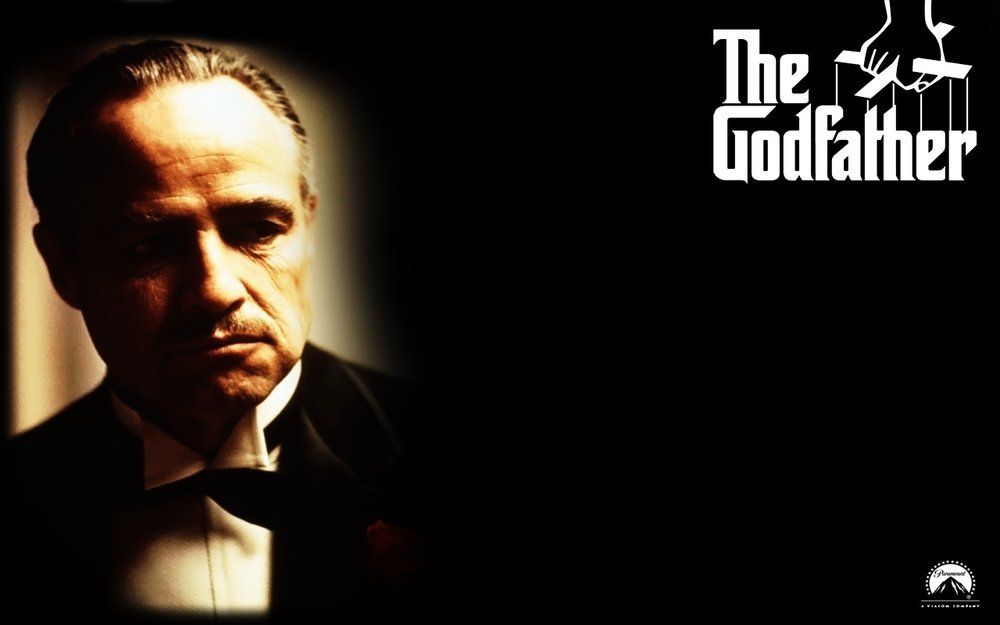I’ve been watching The Godfather on Blu-ray, and have been rather disappointed just how muddy the image is.
Credit where credit’s due: the rich high-contrast nature of Gordon Willis’ astounding cinematography is well captured for the most part. The shadows are as black as they were in the theatre. You can really appreciate the control of light, especially as characters emerge from darkness and disappear back into it.
But the high definition image resolution just isn’t there. The details end up fuzzy. The sharpness doesn’t seem up to par for a 35mm negative, that’s for sure.
Other films from the period, including The Wild Bunch, haven’t suffered so badly. What has The Godfather done to be treated so disrespectfully?
Given that Francis Coppola’s company authors DVDs, I assume that the Blu-ray result on this film is testament to the poor quality of the surviving film elements available. I can only imagine what they had to work with for the opening wedding sequence, in which the outdoor shots seem very blown out – blown out in a video sense more than a film sense. No amount of restoration is going to put back resolution that has been lost.
As it turns out, that’s precisely the problem. Stephanie Argy writes in American Cinematographer: Post Focus:
Widely regarded as an American classic and a landmark achievement in cinematography, Paramount Pictures’ The Godfather (1972) is identical to most films of its era in one respect: it was not properly preserved. Paramount, like most Hollywood studios, did not create a preservation program — “asset protection” in industry parlance — until the home-video boom of the 1980s proved film libraries could have indefinite, lucrative lives. Before that awareness took hold, original negatives were typically used as printing negatives, which meant the original negatives for popular pictures took a lot of abuse. The Godfather was not only popular, it was Hollywood’s first blockbuster, and over the years, “the neck of the golden goose was certainly wrung out,” says the film’s cinematographer, Gordon Willis, ASC, with typical candor.
This really is heartbreaking, that a cinema classic such as this is left with a Blu-ray that looks more like an upconverted standard DVD.
On Amazon, Reviewer Wayne Klein claims…
“The Godfather” was meant to look grainy so those of you who hate grain will probably wonder why they didn’t eliminate it. That’s because to do so would have required altering the look of the film not restoring it and the usual result of eliminating film grain is that you lose detail.
The problem is that you get some grain, but only in the most underexposed scenes where the lab had to push the image more than otherwise. This is nothing like the well-used print I saw years and years ago in a revival house in LA, which was scratched and broken in places but had some fine cinematic detail. One of the appeals of Blu-ray is that it can actually present much of that rich detail. But The Godfather does not showcase that.
Back on Amazon, reviewer Kieth Paynter writes:
If you are looking for a “wow” disc to show off your Blu-ray home theater sound and video, this is not it. If you are looking to experience modern American Gangster cinema in its 1970’s glory, this is as close as you are ever likely to get, muted sepia-esque color, film grain and all.
These were not done exclusively for the home market. The priority was that they were restored for theatres, because that is where they would be judged the most critically, and all indications are that they do not disappoint. Never watch these films in your living room with the lights on. Watch them like you do in the theater, lights out, to appreciate the effort that went into these films.
That’s excellent advice. You can’t appreciate the rich blacks in the compositions with the room lights on.
The Godfather is still one of the greatest movies of all time, and if you have never seen it, put that on a must-watch list. This Blu-ray is not going to get you the cinematic experience, but at least it has the richness. And all of the story is there, as vivid and compelling as ever.
Perhaps of interest: An American Cinematographer article on The Godfather restorations done some time ago.
